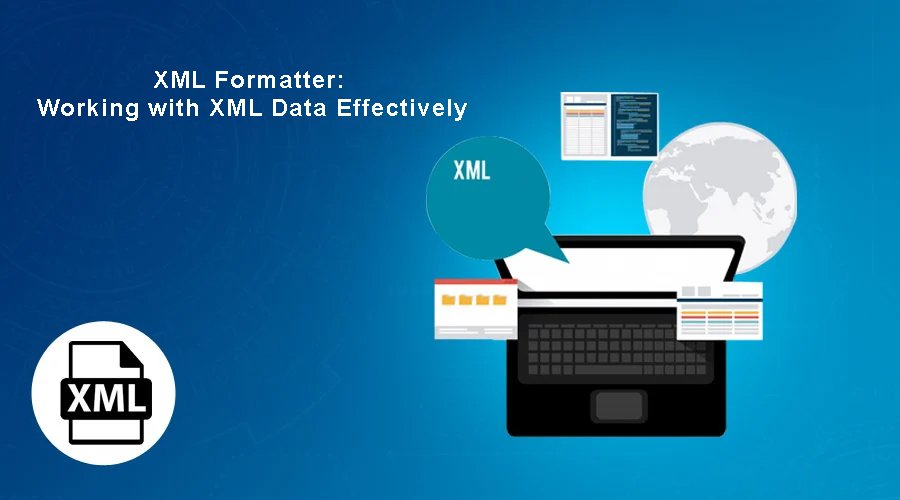
XML Formatter: Working with XML Data Effectively
XML (Extensible Markup Language) is a widely-used format for storing and exchanging data across different systems and applications. Its human-readable structure and self-describing nature make it a popular choice for various purposes, including web services, configuration files, and data serialization. However, working with raw XML data can be cumbersome due to its verbose nature and potential complexity. This is where XML formatters come into play, providing tools and techniques to enhance readability, facilitate manipulation, and improve the overall efficiency of handling XML data.
Xml Formatter: https://toolsbing.com/xml-formatter
Understanding XML Formatters
An XML formatter is a tool or library that restructures XML data to improve its presentation and readability without altering its underlying meaning or validity. It achieves this by adjusting whitespace, indentation, and line breaks to create a well-organized and visually appealing structure. The primary goal of an XML formatter is to make the XML document easier to read and understand for both humans and machines.
Benefits of Using XML Formatters
Using XML formatters offers several advantages:
- Improved Readability: The most significant benefit is the enhanced readability of XML data. By adding proper indentation and line breaks, formatters transform cluttered XML into a well-structured and easily interpretable format. This is crucial for developers and analysts who need to inspect, debug, or modify XML documents.
- Simplified Debugging: When XML data is formatted consistently, identifying errors or inconsistencies becomes easier. Formatters can help reveal structural issues or missing tags that might otherwise be hidden in a jumble of unformatted XML.
- Enhanced Collaboration: In team environments, using a common XML formatting standard ensures that everyone works with consistently structured data. This promotes better collaboration and reduces confusion when sharing or merging XML documents.
- Data Validation: Many XML formatters incorporate validation features that check the XML document against its associated schema or DTD (Document Type Definition). This helps identify and rectify potential errors early in the development process.
- Integration with Development Tools: Most modern IDEs (Integrated Development Environments) and code editors include built-in XML formatters or support integration with external formatting tools. This streamlines the development workflow and ensures consistent formatting across projects.
Common Features of XML Formatters
XML formatters come with a variety of features to cater to different needs and preferences:
- Indentation and Alignment: Control over indentation levels and alignment of tags and attributes.
- Line Breaks: Customization of line break placement to optimize readability.
- Whitespace Handling: Options to preserve or remove unnecessary whitespace.
- Tag Case Conversion: Conversion of tag names to uppercase, lowercase, or camel case.
- Attribute Ordering: Sorting of attributes within tags for consistency.
- Content Formatting: Formatting of text content within XML elements.
- Schema Validation: Validation of XML against a specified schema or DTD.
- Output Options: Control over output format (e.g., indented, compact) and encoding.
Popular XML Formatting Tools
Several tools and libraries are available for formatting XML data:
- Online XML Formatters: Numerous websites offer free online XML formatting services. These are convenient for quick formatting tasks without installing any software. Some popular options include:
- Command-line Tools: For those who prefer working in the command line, tools like xmllint (part of the libxml2 library) provide XML formatting capabilities.
- IDEs and Code Editors: Many popular IDEs and code editors, such as Visual Studio Code, Sublime Text, and Atom, have built-in XML formatting features or support extensions that provide this functionality.
- XML Libraries: Programming languages often have dedicated XML libraries that include formatting capabilities. For example, in Python, the lxml library provides functions for parsing and formatting XML data.
Choosing the Right XML Formatter
The choice of XML formatter depends on individual needs and preferences. Factors to consider include:
- Ease of Use: The formatter should be intuitive and easy to use, with clear options for customization.
- Features: Select a formatter that offers the features necessary for your specific requirements, such as schema validation or attribute ordering.
- Integration: If you primarily work within an IDE or code editor, choose a formatter that integrates seamlessly with your development environment.
- Performance: For large XML documents, performance can be a crucial factor. Consider formatters that offer efficient processing and optimization.
Best Practices for XML Formatting
To ensure consistency and readability, follow these best practices when formatting XML data:
- Use Consistent Indentation: Choose an indentation style (e.g., two or four spaces) and apply it consistently throughout the document.
- Add Line Breaks: Insert line breaks after each opening tag and before each closing tag to improve visual separation.
- Group Related Elements: Use indentation to group related elements together, making the structure more apparent.
- Remove Unnecessary Whitespace: Eliminate extra spaces and line breaks that do not contribute to readability.
- Validate Against Schema: If a schema or DTD is available, validate the XML document to ensure its structural integrity.
- Use Comments Sparingly: Add comments only when necessary to explain complex logic or non-obvious structures.
Xml Formatter: https://toolsbing.com/xml-formatter
Conclusion
XML formatters are indispensable tools for anyone working with XML data. They enhance readability, simplify debugging, and promote consistency, leading to more efficient and effective XML processing. By choosing the right formatter and following best practices, developers and analysts can significantly improve their productivity and the quality of their XML-based applications. Remember that the key to successful XML formatting is to prioritize clarity and consistency to ensure that the data is easily understood by both humans and machines.